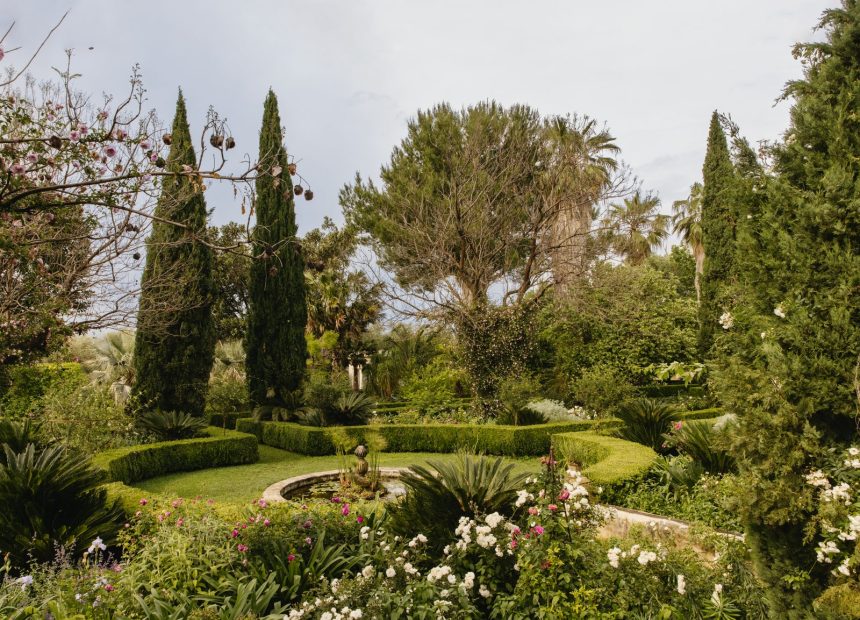The herbaceous plantings followed: pelargoniums, agaves, philadelphus, hibiscus and Allium siculum abound, while the evergreen Agapanthus africanus, planted in curving lines, creates shape in winter. But old roses are Andrea’s first love: the small crimson Rosa ‘De Resht’. ‘Bloomfield Abundance’, ‘Enfant de France, ‘Old Blush China’, ‘Variegata di Bologna and ‘May Queen’ are among his favourites. Most of the plants in the garden came from cuttings from friends, were divided or propagated, or – like the fennels and the native euphorbias – were uprooted from the wilder areas of the property. There is an emphasis on the natural process: not too much control, weeding, tidying or pruning, but observing what the plants choose to do, as they twist and turn of their own accord.
Inspired by the Alhambra in Granada, Andrea designed two long, rectangular pools, bordered by Seville orange trees leading to a pair of Indian pavilions, painted in blue oxide mixed with lime. White agapanthus, alternating ‘Danaë’ and ‘Complicata’ roses, rust-coloured irises and ‘Stella de Oro’ daylilies froth below them. To soften the transition between the formality and lavishness of the Italian Garden and the wildness of the land. scape beyond it, a small wood of scented indigenous trees was established. Oaks, myrtle, bay and arbutus now lead the eye from the formal garden across the arid plains towards the horizon.
The mood changes totally on the east side of the monastery. Here, the design was conceived as an entrance to the house for the wedding of Andrea’s sister Carla in 2015. Swathes of golden wheat surround a monumental circle of mown grass with a path running through it. From the top terrace of the villa, it looks like a modern sculpture.
On the west side are a series of informal intimate gardens: the pool garden; the pet cemetery, bordered in the old Italian style with sage and rosemary hedges; the sheep pen; and the well garden with its clouds of Pistacia lentiscus, softly sculpted by the wind. Staying closely connected to nature plays such an important part in Andrea’s finely tuned aesthetic that he decided to leave the west side of the monastery untamed, without a garden – just primordial savannah, up to the walls.
A few years ago, when an interviewer suggested that Andrea had put the soul back into the garden, he summed up his philosophy: ‘I don’t think so: I have just listened to it’
Commenda di San Calogero is available to rent for holidays and events: commendadisancalogero.com







